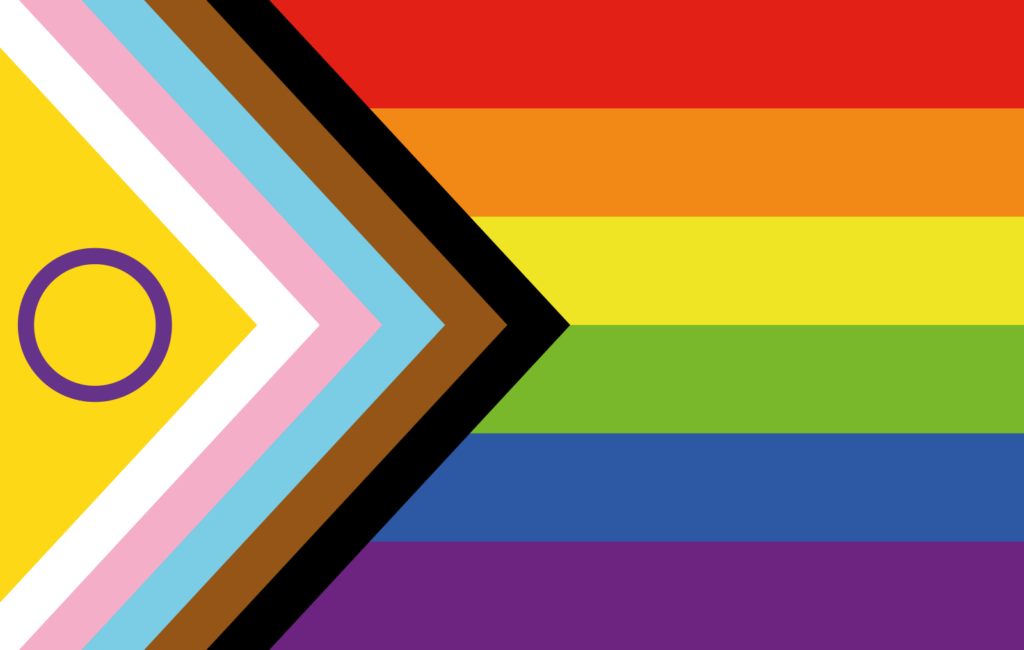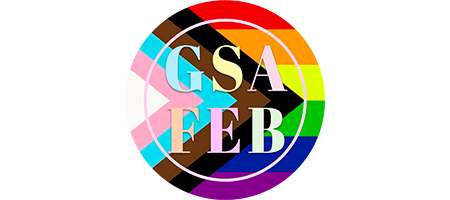Sexualities
What is a sexuality? A person’s sexuality, or sexual orientation, determines who they feel or do not feel attracted to. Sexuality is typically expressed in sexual attraction or romantic attraction. Sexual attraction can be described as a desire (or lack thereof) towards having sex or establishing a sexual relationship with other people. Physical attraction is often included in this description. Romantic attraction, on the other hand, describes a person’s expression of love within a relationship. The relationship does not have to be sexual in nature.
Additionally, a person does not have to experience both sexual attraction and romantic attraction to have a sexuality. It can also be the case that sexual attraction and romantic attraction do not overlap. People can be sexually attracted to a certain gender but not be interested in forming a romantic relationship with them, or want to form romantic relationships with other genders. For ease, when we are discussing certain sexualities here, we will assume that sexual and romantic attraction do overlap and not make a distinction between the two unless specified.
While a majority of the population considers themselves to be heterosexual (feeling sexual attraction towards the opposite gender), many other sexualities exist. Moreover, for some people their sexuality remains the same all their lives, while others consider their sexuality to be more fluid and change over time. Whether your sexuality is static of fluid, both are completely normal and valid.
Let’s dive into some of the more well-known sexualities in the LGBTQ+ community!
Aromantic
Details
The term “Aromantic” refers to individuals who experience a lack of romantic attraction to others. Aromantic is commonly shortened to “Aro”. Moreover, romanticism is a spectrum. Individuals who experience a total lack of romantic attraction, who identify as aromantic, are at one side. On the other side are individuals that do experience romantic attraction. The label corresponding to the experience of romantic attraction is alloromanticism. Additionally, some people might sometimes experience romantic attraction and therefore identify as grayromantic, while others only experience romantic attraction after forming a deep emotional connection to someone and identify as demiromantic. Within the aromantic spectrum, or umbrella, there exist many more variations of romantic attraction.
Some famous people that identify as aromantic are the Ghanian-British screenwriter, filmmaker and actress Michaela Coel, known for the comedy-drama series I May Destroy You, which she created, wrote, produced, co-directed and starred in and won an Emmy for. Additionally, Alice Oseman, author of the Heartstopper graphic novels which were adopted to a TV series in 2022, identifies as both aromantic and asexual.
The aromantic flag:
The oldest aromantic flag design stems from around 2011. It was made via the now-defunct website of the National Coalition for Aromantic Visibility. It consisted of 4 horizontal stripes in the colours green, yellow, orange, and black. An alternative flag was proposed in 2014 by a Tumblr user named Cameron, maintaining the green and yellow but in a more gradient design and adding a stripe of gray. Later in 2014, Cameron changed the yellow stripe to white. This flag design is the one that is currently the most-used to represent aromanticism. The shades have the following meaning:
Dark green: Represents aromanticism;
Light green: Represents the aromantic spectrum;
White: Represents platonic and aesthetic attraction, and queerplatonic relationships;
Gray: Represents gray-aromantic and demiromantic people;
Black: Represents the sexuality spectrum.

Asexual
Details
The term “Asexual” refers to individuals who experience a lack of sexual attraction to others. Asexual is commonly shortened to “Ace”. Additionally, asexuality is a spectrum. At one end there are individuals with a total lack of attraction, known as asexual, while at the other end are individuals that do experience sexual attraction, known as allosexual. Individuals that identify somewhere in between, and might sometimes experience sexual attraction, are known as gray-ace or graysexual.
There exists a misconception that asexual people never have sex and do not enjoy having sex. This can indeed be the case for some asexual people. However, other asexual people do have sex. This is because sexual attraction is not always a precondition for having a sex drive. In other words, not everyone has consensual sex with people they are attracted to. Asexual people can have many reasons for engaging in sex, such as enjoying the feeling of sex, a desire for having children, or building a romantic relationship, among others.
As such, attitudes towards sex can be broadly divided into three categories and asexual people can experience any of these attitudes towards sex:
- Sex-repulsed: Individuals that are sex-repulsed have no desire for having sex and can feel disgusted or put-off by the thought of sex;
- Sex-neutral: This is also known as being sex-indifferent. It indicates that there are no strong feelings about sex, positive or negative;
- Sex-positive: This is also known as sex-favourable. Asexual individuals that have a sex-positive attitude do, or may enjoy, having sex.
Some famous people that identify as asexual are the English singer-songwriter Cavetown, Yasmin Benoit, the activist, writer, and model, and David Jay, an activist and the founder of the Asexual Visibility and Education Network (AVEN).
The asexual flag:
The flag currently used most to represent the sexuality asexual has been formalised in 2010 after being voted on in an open-access online poll by various asexual communities. The shades have the following meaning:
Black: Represents asexuality;
Gray: Represents the gray area between sexual and asexual;
White: Represents the presence of sexual attraction;
Purple: Represents community.
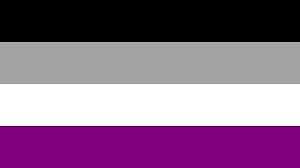
Bisexual
Details
The term “Bisexual” refers to individuals who are sexually and/or romantically attracted to more than one sex or gender. People who identify as bisexual often label themselves as “Bi” for short. Bisexuality or “Bi+” is also used as an umbrella term to describe all sexualities where people are attracted to more than one gender or sex, such as pansexual, omnisexual, or queer, amongst others.
Although comprising of the largest group of individuals within the LGBTQIA+ community, biphobia remains prevalent both within the community and society at large. Biphobia is the prejudice, fear, or hatred directed towards bisexual people. An example of this is the invalidation of people who identify as bisexual by being told to “pick just one gender”. Biphobia can also be expressed through bi erasure. Bisexual erasure or bisexual invisibility is the tendency to ignore, remove, falsify, or re-explain evidence of bisexuality in history, academia, the news media, and other primary sources. Examples of bi erasure are:
- Assuming a bisexual individual’s sexuality based on the gender of the person they are currently dating;
- Thinking bisexuality is just a phase and that bisexual people are just confused, or thinking it is a stepping stone from straight to gay, i.e., thinking bisexuality is only temporary.
Some famous people that identify as bisexual are Kit Connor, the actor known for playing Nick Nelson on Netflix’s Heartstopper; singer and actress Lady Gaga, known for hit songs such as Poker Face or Bad Romance, or for her role in A Star is Born; and Tessa Thompson, the singer and actress known for playing Valkyrie in the MCU.
The bisexual flag:
The bisexual flag was designed by Michael Page in 1998 in order to increase the visibility of bisexuals among society as a whole and within the LGBTQIA+ community. The colours of the flag were inspired by the biangles or bisexuality triangles designed by Liz Nania in 1987 to represent the bisexual contingent for the Second National March on Washington for Lesbian and Gay Rights. The biangles consist of one pink triangle, which used to be a Nazi concentration camp badge that later became a symbol of gay liberation, representing homosexuality, and a blue triangle representing heterosexuality. The two triangles overlap slightly to create a lavender area representing the “queerness of bisexuality”. The colours of the flag have the following meaning:
Pink: Represents attraction to people of the same sex or gender;
Purple: Represents attraction to someone regardless of their sex or gender;
Blue: Represents attraction to people of the opposite sex or gender.
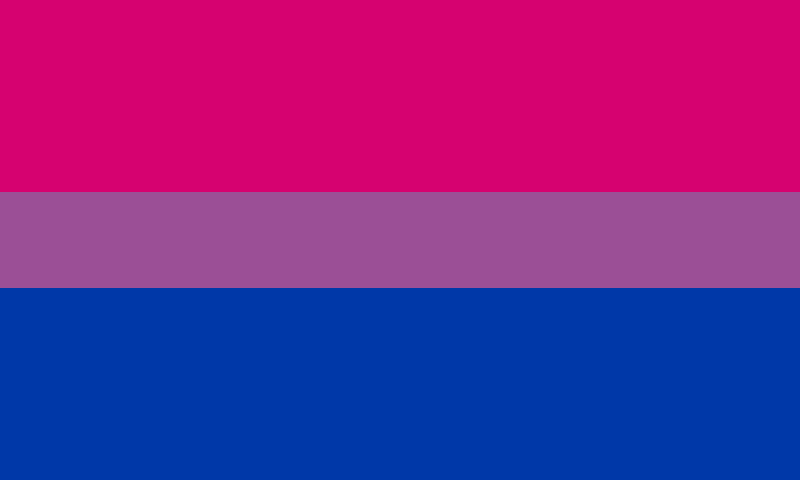
Gay
Details
The term “Gay” refers to men* who are sexually and/or romantically attracted to other men. Although the term is predominately used while referring to men, gay is also used as an umbrella term to describe people being attracted to others of the same gender identity.
Some famous people that identify as gay are Tom Daley, a British Diver and Olympic Gold Medalist, Jesse Tyler Ferguson, the actor known for playing Mitchell Pritchett in Modern Family, and Lil Nas X, American singer, rapper, and songwriter.
The gay flag:
The flag currently used most to represent the sexuality gay is a modernised version of the earlier gay flag that only incorporated blue tones. This updated version includes shades of green to be more inclusive to a wider range of gay men, including, but not limited to transgender, intersex, and gender nonconforming men. The shades have the following meaning:
Turquoise to green: Represents community, healing, and joy;
White: Represents gender nonconforming, non-binary, and transgender individuals;
Blue to purple: Represents pure love, fortitude, and diversity.

*This definition also includes man-aligned people such as some non-binary and genderqueer people.
Lesbian
Details
The term “Lesbian” is used to refer to women* who are sexually and/or romantically attracted to other women. The term “lesbian” was originally used to refer to people from the Greek island of Lesbos, which was associated with the poet Sappho. Sappho wrote love poems to other women in circa 600 BC and has been associated with erotic love between women since 1732.
The “L” is the first letter in the LGBTQ+ community because of the help of lesbians during the AIDS epidemic. During this epidemic, lesbians showed their willingness to support gay men in their time of need by donating blood, providing food and shelter, and taking care of the ill when they were ostracised by society at large. Changing the acronym from GLBT to LGBT, thereby putting the “L” before the “G”, commemorates this love, compassion, and solidarity.
Some famous people that identify as lesbian are singer, actor and dancer Haley Kiyoko, actor Samira Wiley, and Wanda Sykes, actor, comedian and script writer.
The lesbian flag:
The lesbian flag has had several iterations since its conception. The first flag, the Labrys lesbian flag (1999), depicted a labrys, a double-headed axe that was adopted in the 1970s as a symbol of empowerment by the lesbian feminist community, on an inverted black triangle symbolising the black triangle that women who were considered asocial by Nazi Germany were forced to wear, set against a violet background, the colour associated with lesbians through Sappho’s poetry. The flag currently used most to represent the lesbian community is a modernised version of the Lipstick lesbian flag and the Pink lesbian flag, which depict seven stripes of various shades of red and pink. The shades have the following meaning:
Dark orange: Represents transgressive womanhood;
Light orange: Represents community;
White: Represents gender nonconformity;
Light pink: Represents freedom;
Dark pink: Represents love.
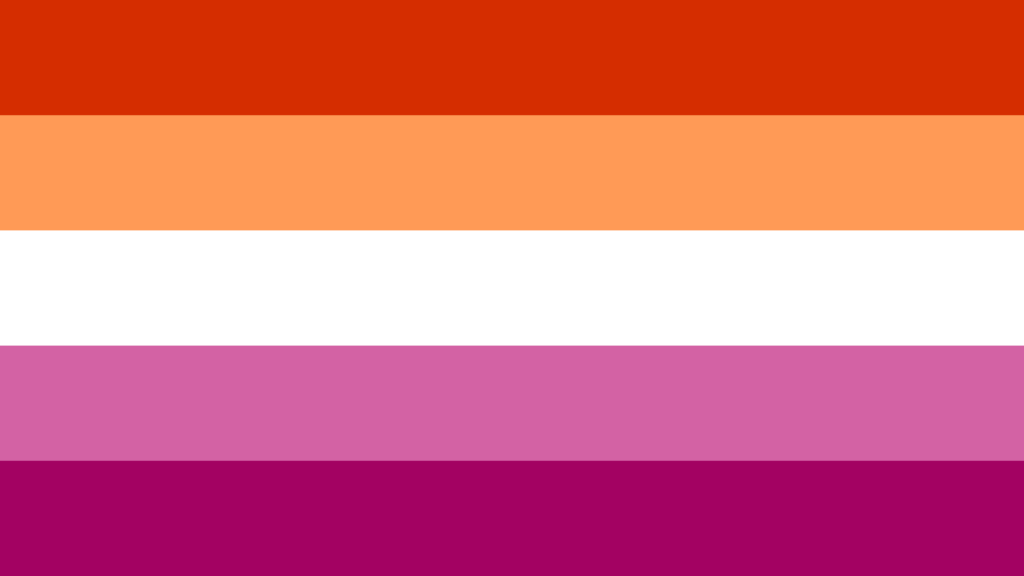
*This definition also includes women-aligned people such as some non-binary and genderqueer people.
Pansexual
Details
The term “Pansexual” is used to refer to people who are sexually and/or romantically attracted to people regardless of their gender. Pansexuality falls under the umbrella term “bisexual”, which refers to people who are attracted to two or more genders. Other sexualities which are part of this umbrella are polysexual and omnisexual.
While bisexuality and pansexuality overlap largely, there is a difference between the two. Bisexuality refers to attraction to more than one gender whilst pansexuality refers to attraction regardless of gender. This means that the gender of the people pansexual people are attracted to, does not factor into attraction.
A common misconception about pansexuality is that people cannot have preferences. This is not true. Some people have preferences even if gender itself does not factor into attraction, and that is okay. Moreover, pansexuality is not replacing bisexuality and being bisexual is not biphobic (or the other way around).
Which label to use?
Pansexuality and bisexuality have a lot of overlap. However, the distinction can be very important to people. Some people identify as both bisexual and pansexuality. Some people only identify as either. Which label(s) you wish to use is a personal choice or preference and can only be decided for yourself by you.
Some famous people that identify as pansexual are actor and singer Miley Cyrus, known her songs Flowers and Wrecking Ball or her role as Hannah Montana in the show Hannah Montana, the drag queen Bob the Drag Queen, known for competing in RuPaul’s Drag Race, and singer Yungblud, known for the song parents.
The pansexual flag:
The pansexual flag that has been most known and most commonly used was created in the 2010s, when it was posted on an anonymous Tumblr account. The flag was designed as a symbol for the pansexual community in order to increase its visibility and recognition. A secondary purpose was to distinguish itself as separate from bisexuality. The shades of pansexual flag have the following meaning:
Pink: Attraction to women/female-aligned individuals;
Yellow: Attraction to non-binary people;
Cyan: Attraction to men/male-aligned individuals.
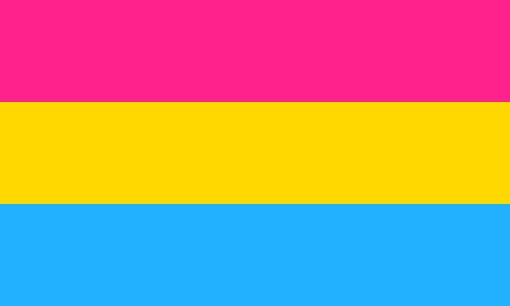
Queer
Details
The term “Queer” is an umbrella term used by the LGBTQIA+ community to include all sexualities and gender identities that differ from heterosexual and cisgender. While individuals of any sexuality or gender identity in the LGBTQIA+ community can use the term queer to describe themselves, some people prefer to identify specifically as “queer” instead of ascribing themselves to a specific sexuality or gender identity.
“Queer” was first introduced into the English language in the 16th century. At the time queer meant “odd”, “peculiar”, “strange”, or “eccentric”. Later, in the 19th and 20th centuries, queer was used as a pejorative term for gay men. In the 1980s, the term was reclaimed by the LGBTQIA+ community and was instead used as a neutral or positive self-identifier by LGBTQIA+ people.
Although the term has been reclaimed in recent years by many in the LGBTQIA+ community, others in the community consider it offensive as an epithet due to its history of being used as a slur against people in the community. Therefore, it is important to be mindful of the usage of the term.
Some famous people that identify as queer are actor Harvey Guillén, known for his role as Guillermo on What We Do in the Shadows, actor Sara Ramírez, known for their role as Dr. Callie Torres in Grey’s Anatomy, and singer and actress Evan Rachel Wood, known for her roles in Westworld and Frozen II.
The pride flag:
The pride flag used by the LGBTQIA+ community has had many version throughout the years. The original pride flag (1978) consisted of eight stripes representing colours of the rainbow. Due to the unavailability of pink fabric, the flag was updated to seven stripes months, without a pink stripe. In 1979, the flag was changed again to result in the six-stripe version that became popular in the coming decades, consisting of a red, orange, yellow, green, blue, and violet stripe. In more recent years the flag has been updated several times to focus more on inclusion and progress within the community, resulting in the Progress Pride Flag (2018), and most recently the intersex-inclusive Progress Pride Flag (2021). The shades of the intersex-inclusive Progress Pride Flag have the following meaning:
Red: Represents life;
Orange: Represents healing;
Yellow: Represents sunlight;
Green: Represents nature;
Blue: Represents serenity;
Violet: Represents spirit;
Brown and Black: Represents people of colour;
White, blue and pink: Represents the trans community;
Yellow with a purple circle: Represents the intersex community.
